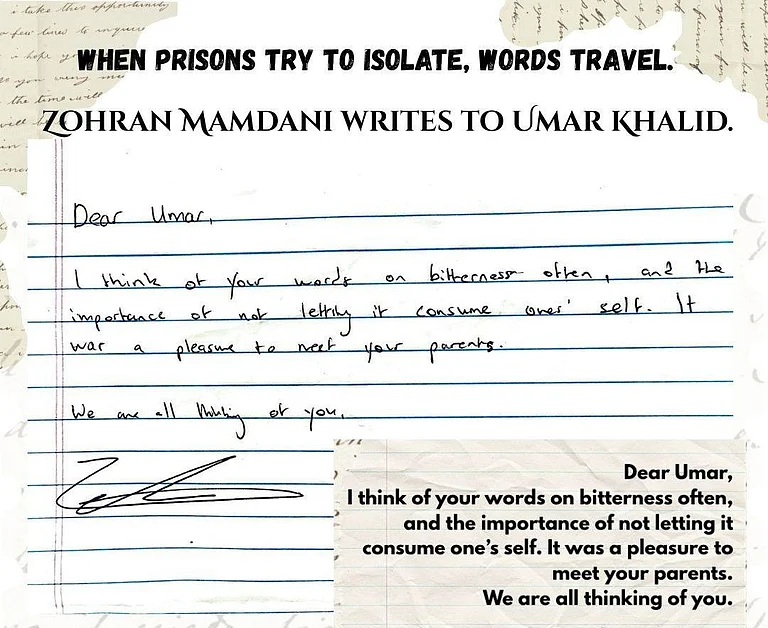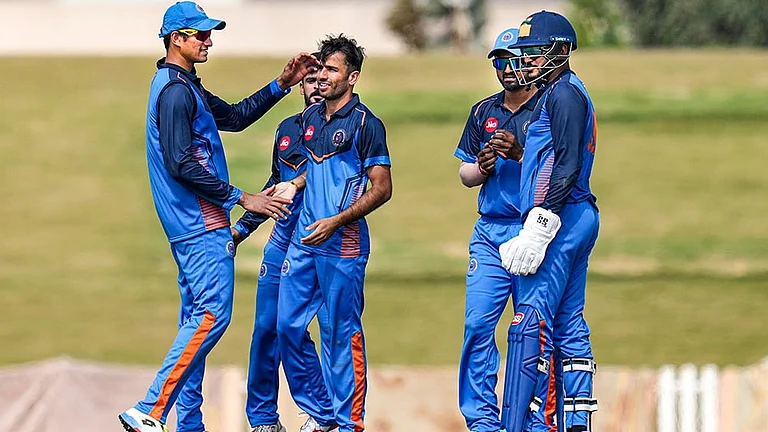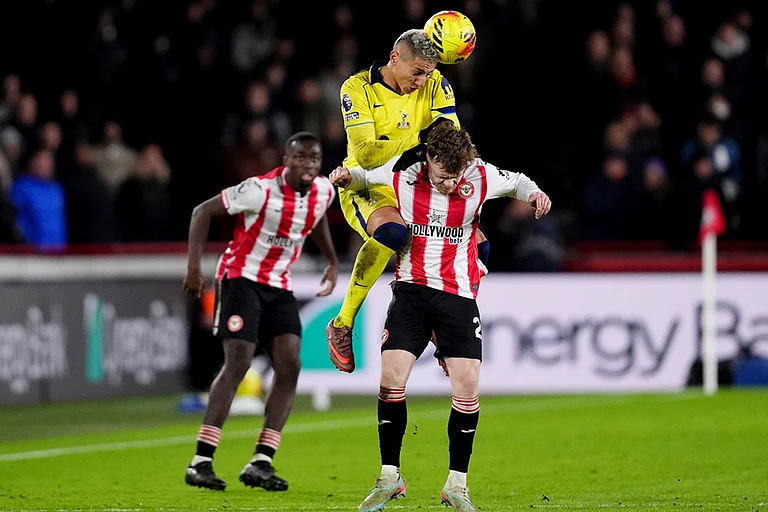On February 3, 2018, Jitendra Yadav, 27, a gym trainer, was returning home with three of his friends. An altercation with a sub-inspector and three other constables in Noida resulted in a bullet being fired that pierced through Yadav’s neck, damaging his spinal cord and leaving him paraplegic.
While the police later clarified that it was not an official encounter but a criminal act of a delinquent policeman, it raised a question if the state government’s lenient police policy had led to the incident.
The National Human Rights Commission (NHRC) took suo motu cognizance of Yadav’s case and warned the government that “creating an atmosphere of fear is not the correct way to deal with the crime” and said “it seems that the police personnel are feeling free, misusing their power in the light of an undeclared endorsement given by the higher-ups. They are using their privileges to settle scores with the people”.
These “encounters” have been used not just against those accused of running criminal gangs and henchmen of tainted politicians but also in stray cases of crime such as theft, kidnapping, and sexual assault. In police press statements and press conferences, the word “mutbhed” (encounter) has become routine.
The recent deaths of gangster and former Samajwadi Party leader Atiq Ahmed and his son Asad has brought the focus back on encounter killings. While Asad, 19, was gunned down by the Uttar Pradesh Special Task Force (STF) in Jhansi on April 13, two days later, Atiq and his brother Ashraf were shot dead at point-blank range in Prayagraj by three persons who claimed to be journalists.
On April 24, the state government lauded its law and order performance as a success and said: “Aaj UP no curfew, no danga. UP me sab, sab aur changa. Mafia apradhi ho gaye ateet, suraksha, khushali aur rozgaar ka ab bana hai prateek.”
A Long List of Encounters
In March 2023, the Uttar Pradesh police claimed in a press release that they had nabbed 5,967 criminals in 10,713 encounters during the past six-years, while 1,708 criminals and 55 police personnel were injured.
“Improving the law and order situation in the state is a priority ... the state government has adopted a policy of ‘zero tolerance’ against mafias and intensified crackdown on anti-social elements to strengthen UP’s law and order situation”, the release said.

The statements by state politicians over the past six years provide credence to this perception that the state police should be feared and dreaded. In 2017, Deputy Chief Minister Keshav Prasad Maurya said that under the BJP, criminals in UP were terrified with the thought that “either they will have to give up crime or leave UP, or maybe even leave this world”.
SR Darapuri, a retired Indian Police Service (IPS) officer who served under several state governments, says that while encounters happened earlier too, “never before did the state exhibit it as a personal achievement”.
He adds that in the name of tackling crime through hard action, a fear psychosis has been created in the state.
“There is no rule of law. There is an insecurity among people that the police can do anything and get away with it. But there should be fear of law and not of police,” he says.
Retired IPS officer Meera Borwankar, too, feels the police action has official endorsement.
“What is happening in UP has definite blessings of the administration. There is no doubt about it,” says Borwankar.
Encounter: A Contested Term
The term “encounter” is often contested by human rights activists who allege these operations are more likely to be staged and planned executions and not spontaneous shootouts. However, the state has provided direction to this policy through calls of “thok denge” and “iss mafia ko mitti mein mila denge”. Earlier, the state government had empowered senior officers to announce increased cash rewards to police personnel for arresting criminals. These bounties are often cited as evidence of criminality when these suspects are shot in “encounters.”
The government’s stance, however, has been criticised by human rights defenders as well as political opponents. In a 2021 report titled ‘Extinguishing law and life—Police Killings and Cover up in the State of Uttar Pradesh’, the Youth for Human Rights Documentation, Citizens Against Hate and People’s Watch questioned the state’s motivation behind the use of the euphemism “police encounter”.
“It becomes clear that it is used to validate policing methods and deflect from legal accountability. It allows the police and security forces to disregard the rule of law and commit grave human rights violations, and instead promote vigilante justice by celebrating the actions of police officials in eliminating alleged criminals without accountability,” the report said.
After a spate of allegations of fake encounters, the People’s Union of Civil Liberties (PUCL) filed a petition in the Supreme Court demanding that they be investigated by the Central Bureau of Investigation (CBI) or a Special Investigating Team (SIT) comprising police officers of integrity and who have not served in UP.
“The impunity with which the police encounters have been taking place is endorsed by the state government,” the PUCL said.
The UP government told the SC in a counter affidavit, “The police do not go looking for violence, nor use any force more than necessary, but in some cases, due to the actions of the criminal being apprehended, a situation arises in a sudden and inevitable manner in which the police personnel are constrained to use lawful and proportionate force in self-defence in carrying out the duty assigned to them.”
Ground Reality
Despite this benign stance in court, in reality, the state has been aggressive in pushing its image of a land where encounters are justified, endorsed, and necessary. In 2018, the Aligarh police came under the scanner after the police called local scribes to a spot during an operation where two persons were shot dead.
This frenzy was once again on display in the 2020 Vikas Dubey case. The killing of the Kanpur-based history-sheeter whose gang killed eight policemen in an ambush in July 2020 in Bikru village, raised eyebrows for its brazenness.
The judiciary is yet to forcefully intervene in this matter despite several instances of doubt over the authenticity of encounters. In the Vikas Dubey killing, the SC accepted the state’s version even though it was questioned by all quarters and viewed as a brazen act of revenge killing by the police. In a rare instance, the Allahabad High Court in 2022 directed the Jhansi Police to register an FIR against policemen accused of killing Pushpendra Yadav in a “fake encounter” in 2019 because he had threatened to expose the local SHO for demanding bribe from him in return for promising to free his seized truck.
“Citizens seem to be happy with instant justice called encounters. But for a democracy it heralds a collapse of criminal justice system. Unfortunately, the UP government and its citizens consider it a ‘positive hit’ not a negative one,” says Borwankar.
Retired UP DGP AK Jain, however, says that under the present government, crime has been controlled to a large extent. Jain, who had earlier also headed the UP STF, says he had seen phases where 250-300 encounter killings were carried out by police every year and adds: “I don’t remember a year when these allegations were not made that the UP police encounters are fake.”
According to Borwankar, rather than “advertising encounters”, UP needs to invest in putting their resources in efficient court trials so that a criminal is checked much before he becomes a don, police and prosecutor’s training, prompt court trials and the use of technology for an efficient criminal justice system.
______________________________________________________________________________________________
This appeared in print as "Staged Spectacle"

























